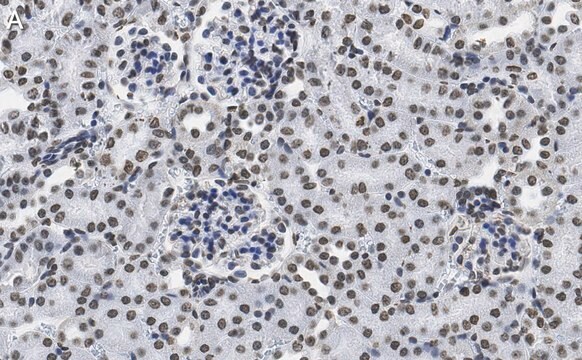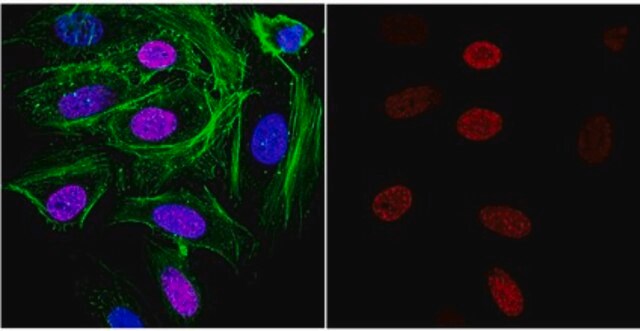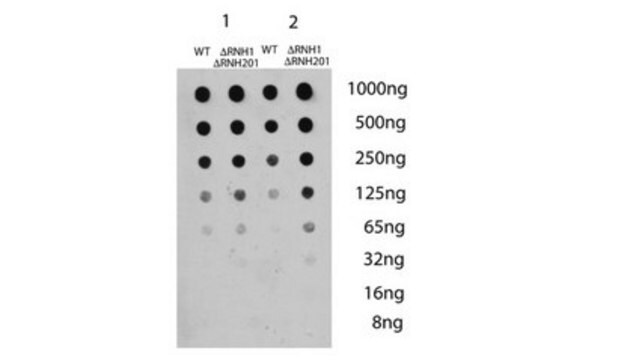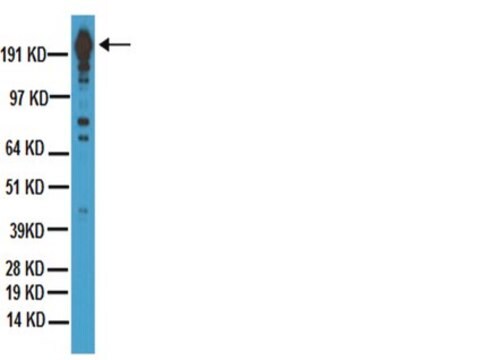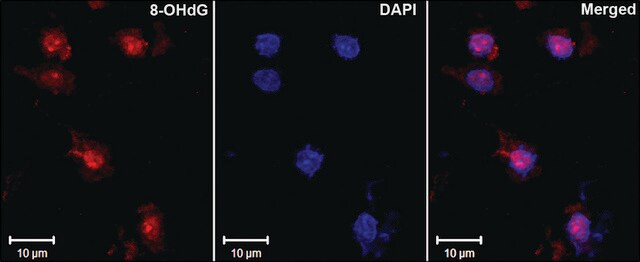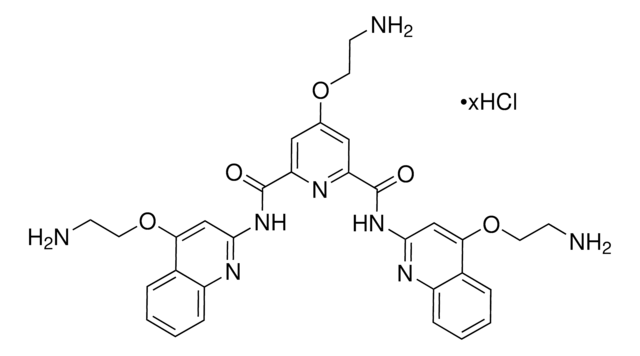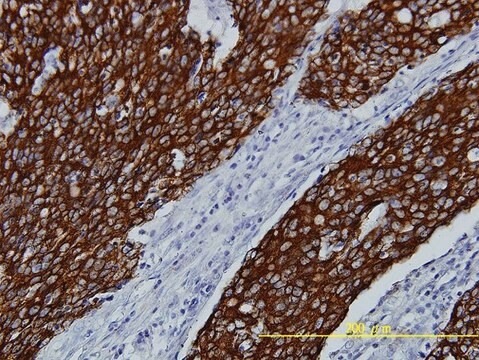MABE917
Anti-DNA G-quadruplex structures Antibody, clone BG4
clone BG4, from Escherichia coli
Synonim(y):
DNA G-quadruplex (BG4)
About This Item
Polecane produkty
pochodzenie biologiczne
Escherichia coli
Poziom jakości
forma przeciwciała
purified antibody
rodzaj przeciwciała
primary antibodies
klon
BG4, monoclonal
reaktywność gatunkowa
human
opakowanie
antibody small pack of 25 μL
metody
ChIP: suitable (ChIP-seq)
ELISA: suitable
immunocytochemistry: suitable
Warunki transportu
ambient
docelowa modyfikacja potranslacyjna
unmodified
Opis ogólny
Specyficzność
Immunogen
Zastosowanie
ChIP-seq Analysis: A representative lot detected DNA G-quadruplex structures in ChIP-seq applications (Hansel-Hertsch, R., et. al. (2016). Nat Genet. 48(10):1267-72).
ELISA Analysis: A representative lot detected DNA G-quadruplex structures in ELISA applications (Biffi, G., et. al. (2013). Nat Chem. 5(3):182-6).
Immunocytochemistry Analysis: A representative lot detected DNA G-quadruplex structures in Immunocytochemistry applications (Biffi, G., et. al. (2013). Nat Chem. 5(3):182-6).
Jakość
Postać fizyczna
Inne uwagi
Nie możesz znaleźć właściwego produktu?
Wypróbuj nasz Narzędzie selektora produktów.
polecane
Kod klasy składowania
12 - Non Combustible Liquids
Klasa zagrożenia wodnego (WGK)
WGK 2
Temperatura zapłonu (°F)
Not applicable
Temperatura zapłonu (°C)
Not applicable
Certyfikaty analizy (CoA)
Poszukaj Certyfikaty analizy (CoA), wpisując numer partii/serii produktów. Numery serii i partii można znaleźć na etykiecie produktu po słowach „seria” lub „partia”.
Masz już ten produkt?
Dokumenty związane z niedawno zakupionymi produktami zostały zamieszczone w Bibliotece dokumentów.
Nasz zespół naukowców ma doświadczenie we wszystkich obszarach badań, w tym w naukach przyrodniczych, materiałoznawstwie, syntezie chemicznej, chromatografii, analityce i wielu innych dziedzinach.
Skontaktuj się z zespołem ds. pomocy technicznej